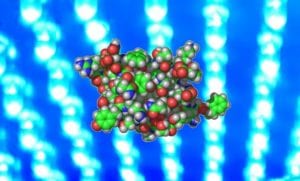Light activated pancreatic cells produce insulin on demand
Tufts University scientists have actually transplanted engineered pancreatic beta cells into diabetic person mice, then created the cells to generate greater than 2 to 3 times the normal degree of insulin by subjecting them to light. The light-switchable cells are developed to make up for the reduced insulin manufacturing or lowered insulin reaction discovered in diabetic individuals. The research study published in ACS Synthetic Biology shows that glucose levels can be regulated in a computer mouse model of diabetes mellitus without pharmacological intervention.

The insulin hormone plays a central role in precisely controlling levels of circulating glucose. Diabetes affects more than thirty million Americans according to the reports of the Centers for Disease Control and Prevention (CDC). In type II diabetes which is the most common form of the disease, the cells of the body become inefficient at responding to the insulin
& as a consequence of this, the glucose in circulation can become dangerously high giving rise to a condition called hyperglycemia while the pancreas cannot produce enough insulin to compensate. In Type I Diabetes, the pancreatic beta
cells, which are the only cells that produce insulin, are destroyed by our immune system resulting in a complete lack of the insulin hormone.Current treatments and medications include the administration of drugs that enhance the production of insulin by pancreatic beta cells, or by the direct injection of insulin to supplement the naturally produced supply. In both of these cases, regulation of blood glucose becomes a manual process, with drug or with the insulin intervention conducted after periodic readings of glucose levels, often leading to spikes & valleys that can have harmful long-term effects.
Scientists sought to develop a novel way to amplify insulin production while maintaining the important real-time link between the insulin release and the concentration of glucose in the bloodstream. The team accomplished this by taking advantage of ‘optogenetics’, an approach relying on proteins that change their activity on-demand with light. The pancreatic beta cells were engineered with a gene that can encode a photoactivatable adenylate cyclase (PAC) enzyme. The PAC enzyme produces the molecule cyclic adenosine monophosphate (cAMP) when exposed to the blue light, which in turn cranks up the glucose-stimulated the production of insulin in the beta-cell. Insulin production can increase 2- to 3-fold, but only when the blood glucose amount is high. At low levels of glucose, insulin hormone production remains low. This avoids the common drawbacks of diabetes treatments which can overcompensate on insulin exposure and then leave the patient with dangerously low blood sugar, a condition called hypoglycemia.
Researchers found that transplanting the engineered pancreatic beta-cells under the skin of diabetic mice led to improved tolerance & regulation of glucose, reduced hyperglycemia, and higher levels of plasma insulin when subjected to illumination with blue light. Emmanuel Tzanakakis who is a professor of chemical & biological engineering at the School of Engineering at Tufts University and corresponding author of the new study said it is a backward analogy, but the team is actually using light to turn on and off a biological switch. He further explained, in this way, researchers can help in a diabetic context to better control & maintain appropriate levels of glucose without any pharmacological intervention. The cells do the work of insulin hormone production naturally and the regulatory circuits within them work the same; the team just boosts the amount of cAMP transiently in pancreatic beta cells to get them to make more n more insulin only when it is needed, he added.
Blue light simply flips the switch from normal mode to the boost mode. Such optogenetic approaches utilizing light activatable proteins for modulating the function of the cells are being explored in many biological systems. And it has fueled the efforts toward the development of a new genre of treatments.
Fan Zhang, a graduate student in Tzanakakis’ lab at Tufts and the first author of the study, said there are several advantages to using light to control treatment. Obviously, the response is immediate & despite the increased secretion of insulin hormone, the amount of oxygen consumed by the cells doesn’t change significantly as the study shows. Oxygen starvation is one of the common problems in studies involving transplanted pancreatic cells, he added.
Further development of this novel method may include embedding sources of light, for example, tiny, remotely triggered LEDs, for improved illumination & coupling to a glucose sensor for the creation of a bioartificial pancreas device.
Editor’s Note: Light activated pancreatic cells produce insulin on demand, Tufts University scientists, Pancreatic beta cells “switched on” by light, enhanced the production of insulin.






























